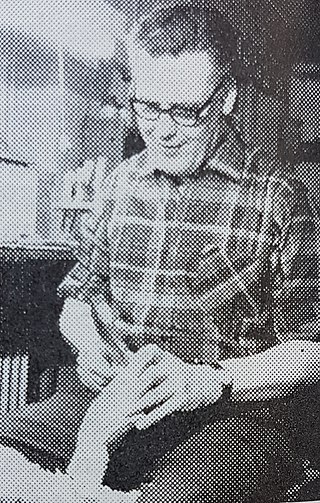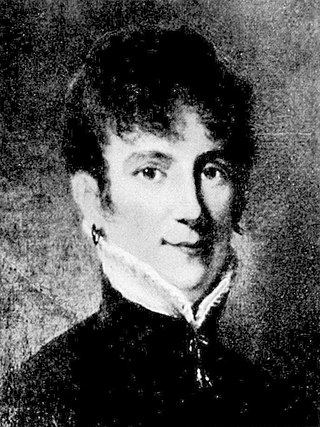


Axel "Döderhultarn" Petersson, formerly Axel Petersson, (12 December 1868 – 15 March 1925) was a Swedish wood carver who was one of the recognized masters of wood carving, most famous for Scandinavian flat-plane-style woodcarving.



Axel "Döderhultarn" Petersson, formerly Axel Petersson, (12 December 1868 – 15 March 1925) was a Swedish wood carver who was one of the recognized masters of wood carving, most famous for Scandinavian flat-plane-style woodcarving.
Axel Petersson Döderhultarn was born in the parish of Döderhult in Oskarshamn Municipality. His parents were Eva Lotta Persdotter and Per August Petersson. When he was five years of age, his father died. Members of his family decided the best thing for him to do as a young adult was to emigrate to the United States. Petersson did not emigrate to America, as his family had planned, and after a brief time away he moved back to help his widowed mother in Oskarshamn. [1]
In his youth, his primary interest was in whittling, and carving small figures. He worked on figure carving and sold figurines in the local market in Oskarshamn. Most of the figures he sold were refined traditional wood carvings. Sometime around 1900 he began to carve in a minimalist style. These are the carved figures he is most famous for. Many of these carvings sold in the local market for $1.00 – $2.00 USD. Adjusted for inflation, $1.50 in 1900 would be equivalent to $33.23 in 2005.
In 1909, Petersson was invited to participate in an exhibition in Stockholm. The public response to his work was overwhelming. Georg Nordensvan wrote in the newspaper Dagens Nyheter on 20 January 1909, "Axel Petersson's old men are irresistibly amusing. They depict such primitive art as one could wish for, made out of a couple of simple contours using only a couple of strokes, but, from an artist with sure eye and nimble hands. It is a new conception with a personal touch...small masterpieces of complete nonconformative art."
After his success with the Stockholm exhibition, some of the museums in Sweden began purchasing his work. He had many requests to exhibit his work throughout Europe and the United States. In 1911 fifty-seven of his figures were on display in Oskarshamn, and the groundwork was laid for a Döderhultarn Museum. His work was also featured in exhibitions in Copenhagen, Brighton, Rome and Turin during 1911. The next year some of his work was shipped to the United States and the Swedish Consulate sent it on tour in several major cities: New York City (1913) and San Francisco and Chicago (1915). [2]
Döderhultarn became known as one of Sweden's great artists. His work, as well as photos of his work, were circulated worldwide and he served as an inspiration to other woodcarvers, including Carl Johan Trygg (1887–1954) and H. S. "Andy" Anderson (1892–1960). His popularity was so great that Döderhultarn figure became the generic term for any small figure in the minimalist style. [3] [4]

A Dalecarlian horse or Dala horse is a traditional carved, painted wooden statue of a horse originating in the Swedish province of Dalarna (Dalecarlia). In the old days the Dalecarlian horse was mostly used as a toy for children; in modern times it has become a symbol of Dalarna, as well as of Sweden in general. Several types of Dalecarlian horses are made, with distinguishing features common to the locality of the site where they are produced. One particular style has, however, become much more common and widespread than others. It is stoutly carved and painted bright red with details and a harness in white, green, yellow and blue.

Oskarshamn is a coastal city and the seat of Oskarshamn Municipality, Kalmar County, Sweden with 17,258 inhabitants in 2010.
Carl Johan Trygg, formally Carl Johan Thrygg, also knowns as C. J. Trygg, woodcarver, was one of the recognized masters of twentieth century woodcarving, most famous for Scandinavian flat-plane style of woodcarving. Between C. J. Trygg and his sons they carved over 10,000 figures. Many of his carvings were sold to tourists for approximately $10.00 USD. Adjusted for inflation what cost $10.00 in 1929 would cost $108.05 in 2005.

Carl Olof Trygg, was one of the recognized masters of 20th century woodcarving, most famous for Scandinavian flat-plane style of woodcarving.

The Scandinavian flat-plane style of woodcarving is a style of figure carving. The figures are carved in large flat planes, created primarily using a carving knife. Tool marks are left in the carving and very little rounding or sanding is done. Emil Janel, a Swedish-born American artist, was considered by many to be one of the best of this genre.
Harley Refsal is an internationally recognized figure carver, specializing in Scandinavian flat-plane style of woodcarving.
Lars Trygg, woodcarver, was one of the recognized masters of 20th century wood carving, most famous for Scandinavian flat-plane style of woodcarving.

Herbert S. Anderson, known commonly as H. S. "Andy" Anderson, was an American woodcarver, one of the recognized masters of 20th-century woodcarving, most famous for Scandinavian flat-plane style of woodcarving and caricature carving.
Nils Trygg (1914–1951) was one of the recognized masters of twentieth century woodcarving, most famous for the Scandinavian flat-plane style of woodcarving. Nils Trygg was born in Småland, Sweden. He was one of three sons of Carl Johan Trygg and Maria Axelina Andersson. Nils worked with his father carving wooden figures of various common people in the Scandinavian flat-plane style of woodcarving. Between Nils Trygg, his father and two brothers, they carved over 10,000 figures. Many of his carvings were sold to tourists for approximately US$10. Adjusted for inflation what cost $10 in 1929 would cost $108 in 2005.

Christina Charlotta Cederström née Mörner af Morlanda was a Swedish dilettante artist, composer, salon hostess, and baroness.

The Döderhultarn Museum is a museum in Oskarshamn, Sweden that exhibits the carved works of Axel Petersson Döderhultarn.

Axel Hamberg was a Swedish mineralogist, geographer and explorer.

Karl Axel Lichnowsky Kock was a Swedish philologist, professor of Scandinavian languages at Lund University 1907-1916.
Benedicta of Bjelbo was a Swedish noblewoman and a central figure in the incident known as the Maiden Abduction from Vreta, wherein she, like her mother, Princess Helen of Sweden before her, and her daughter, Ingrid Svantepolksdotter after her, was abducted from Vreta Abbey by the man she later married. Her abduction was the subject of the folksong "Bridal Abduction of Young Lars" .
Events from the year 1868 in Sweden

Anna Katarina Fredrika Munthe-Norstedt was a Swedish painter known for still-lifes and interiors. She also worked with genre painting and portraits.

Emma Emilia Sigrid Charlotte Blomberg (1863–1941) was a Swedish sculptor who focused on religious art. One of her most notable creations is Bebådelsen, a marble statue depicting the Virgin Mary on her knees in prayer, her head turned upwards. It was the first sculpture by a woman to be acquired by the Swedish National Museum. After carving the wooden Madonna del Fuoco in 1912, she had to abandon sculpture as a result of poor sight. Thereafter she made a living as a bookbinder.

Ernst Axel Henrik Key was a Swedish pathologist, member of parliament, writer and rector at Karolinska Institute.